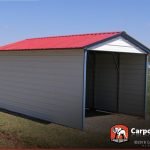In today’s fast-paced world, it’s not uncommon for homes to feel more like a hotel than a home. People are busy, and when you’re working so much you barely have time to sleep, the last thing you want is a space that feels like a prison cell or an office cube. You need somewhere that feels comfortable and relaxing—ideally with features that make it easy to switch between work mode and chill mode. These kinds of designs can be challenging if you don’t know how they work in general. However, there are some simple ways to make your own DIY sliding walls at home. They are kind of hidden, but once you find them, it will be easier than ever! Here are some helpful tips on how you can do it too!
Decide on a theme
Before you even start measuring your space, decide on a theme for the overall design. Do you want a rustic look? Do you want a futuristic look? What colours do you want to use? What materials do you want to use? Depending on the elements you want in your design, it will help you figure out which walls you want to be moveable and which walls you want to be permanent. You also want to make sure that your theme matches the layout of your home. For example, if your home has a modern design, it doesn’t make sense to have a permanent wall that’s designed in a rustic style. Once you know what you want your walls to look like, it will be easier to decide where your tracks will go and how they will move.
Pick your materials
After you’ve decided on a theme, you need to think about the materials you want to use. You’ll want to make sure you pick materials that are easy to clean and long-lasting. You also want to look for materials that go with your theme. While wood and metal are both great materials for any type of design, you may want to pick something else if you’re going for a futuristic look. Stick with things like granite and glass for a modern design, or hardwood and fabric for a rustic design. You can also combine materials to get unique, one-of-a-kind results that fit your design.
Find the area you want to transform
Depending on the type of sliding walls you choose, you can potentially add moving walls to any area of your home. However, you may want to consider the layout of your home when deciding which walls you want moveable. For example, if you want a room that will have multiple people in it, like a dining room or living room, a wall that separates the room in half may not be the best option. If you want a wall that will separate the room into two sides, a wall that moves up and down may be a better option. In addition to the layout of your home, you also want to think about how you want to use the room. For example, if you want a room that can be used as an office and a playroom for kids at the same time, you may want to consider moving walls. This way, you can make the room accessible for both types of activities.
Get your measurements straight
No matter what type of wall you want to add to your house, you need to make sure you have the measurements for that wall correct. Building the wall too short or too long can cause it to be unstable, and can make it difficult to open and close. To make sure you have the right measurements, you can measure the wall you want to replace and use that to figure out the measurements for your new wall. Alternatively, if you’re starting from scratch and don’t have an existing wall to use as a template, you can use a measuring tape and a formula known as the 2-4-2 rule. For example, if you want your wall to be 4 feet tall, you need to make sure that the wall you’re replacing is at least 2 feet away from any nearby walls. Additionally, the wall you want to add needs to be 2 feet away from any nearby windows or doors. Finally, you need to make sure that when the wall is fully open, it’s at least 2 feet away from any nearby walls.
Mark where you’ll put your walls
Now that you have the measurements straight, it’s time to mark where you’ll put your walls. To do so, you’ll need to find the studs in your wall. You can do so by banging a screwdriver against the wall. If you hear a distinct click, that means you’ve hit a stud. Once you’ve found all the studs, mark them with a pencil. You can also use a stud finder to make this process easier. Next, put a mark where you want your track to go. You want the mark to be about 2 inches above the top of the stud, and about 2 inches below the bottom of the top of the wall. You want to make sure the mark is in line with the centre of the stud. Finally, put a mark where you want the wall to end. Make sure this mark is in line with the middle of the stud.
Install your tracks and hardware
There are a couple of different types of tracks you can use for your sliding walls. Nails, screws, and staples are best for thinner materials like fabric. However, they take longer to install, making them less ideal if you need to install your tracks quickly. Instead, you can use a pneumatic nail gun to install your tracks in a matter of minutes. You also need to install the hardware you’ll use to open and close your wall. Depending on the type of wall you want, you may need tension cables, a pulley, or even weights. Once you’ve installed your wall, you want to make sure that the opening and closing process is smooth. If the wall is not sliding easily, you may need to add lubrication to the moving parts.
Add in any additional features you need
Finally, you want to make sure that your wall includes any additional features you want, such as lighting, shelves, or artwork. These features are best installed while the wall is still open. This way, you won’t have to worry about trying to install them through a wall that’s been closed. Now that you’ve learned how to create your own DIY sliding walls, you can finally create that home office or living room you’ve always wanted!









